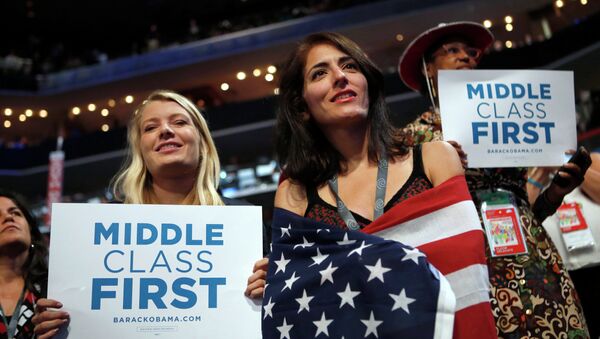The study found that those with higher incomes have seven times the wealth of middle-class families and 70 times that of lower income families, the biggest gap in thirty years.
— Rakesh Kochhar (@RakeshKochhar) December 17, 2014
Last year, the median wealth of upper-income families in the U.S. ($639,400) was 6.6 times bigger than that of middle-income families ($96,500), up from 6.2 times in 2010.
Pew split Americans into lower-, middle- and upper-income groups, adjusting their incomes for family size. They determined that 46% of America’s families were classified as middle income in 2013. One-third of families were lower income and 21% were upper income.
For a family of three, for example, an income last year of about $38,000 made was considered “middle income” and a household income of $114,000 or greater was considered “upper income.”
According to the Fed’s data, the upper-income families have begun to regain some of the wealth they lost during the Great Recession, while this recession hammered a significant number of middle-income and lower-income families that are still struggling to recover.
— Rakesh Kochhar (@RakeshKochhar) December 17, 2014
Pew’s latest analysis builds on its report last week that wealth inequality is growing along racial and ethnic lines.
Income inequality has risen for decades, and pay growth for middle-class households has stalled.
After-tax corporate profits, on the other hand, have hit the highest level as a share of GDP since 1929.
Many aspects of the recovery, and the Federal Reserve’s stimulus policies, have benefited the rich over others.
In a paper recently released by the National Bureau of Economic Research and cited in The New York Times, Emmanuel Saez and Gabriel Zucman argued that the gap between the rich and the poor is widening because of growth at the top.
“The rise in wealth inequality is almost entirely due to the rise of the top 0.1 percent wealth share, from 7 percent in 1979 to 22 percent in 2012.”
The share of wealth controlled by the bottom 90 percent of Americans, they concluded, has steadily declined since the mid-1980s.
Much of America’s wealth gains are due to the stock market, as stocks are disproportionately owned by the wealthy and have jumped nearly 200% since their lowest point in 2009. Meanwhile, many middle-class Americans have been losing assets—things like homes or 401(k)s—selling them off to pay debts.


